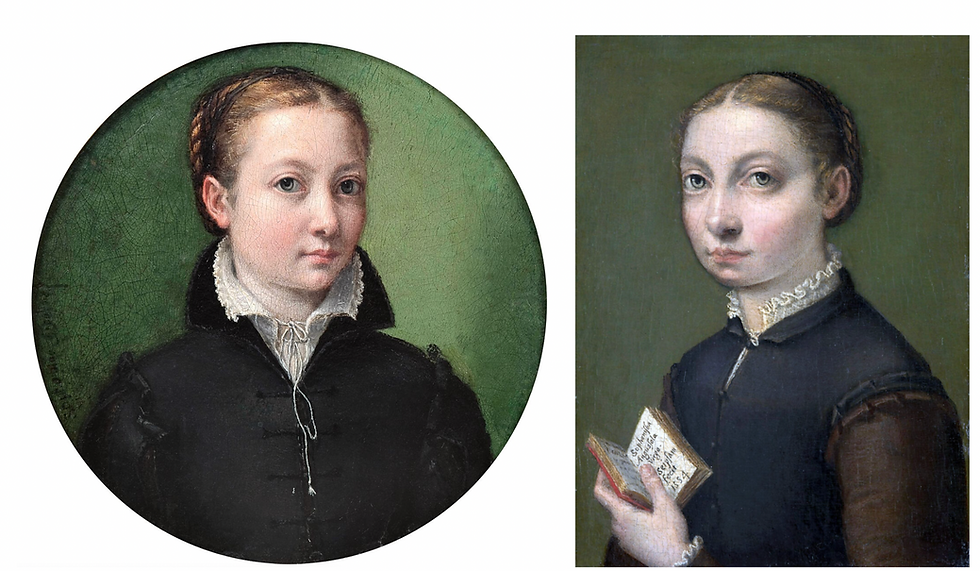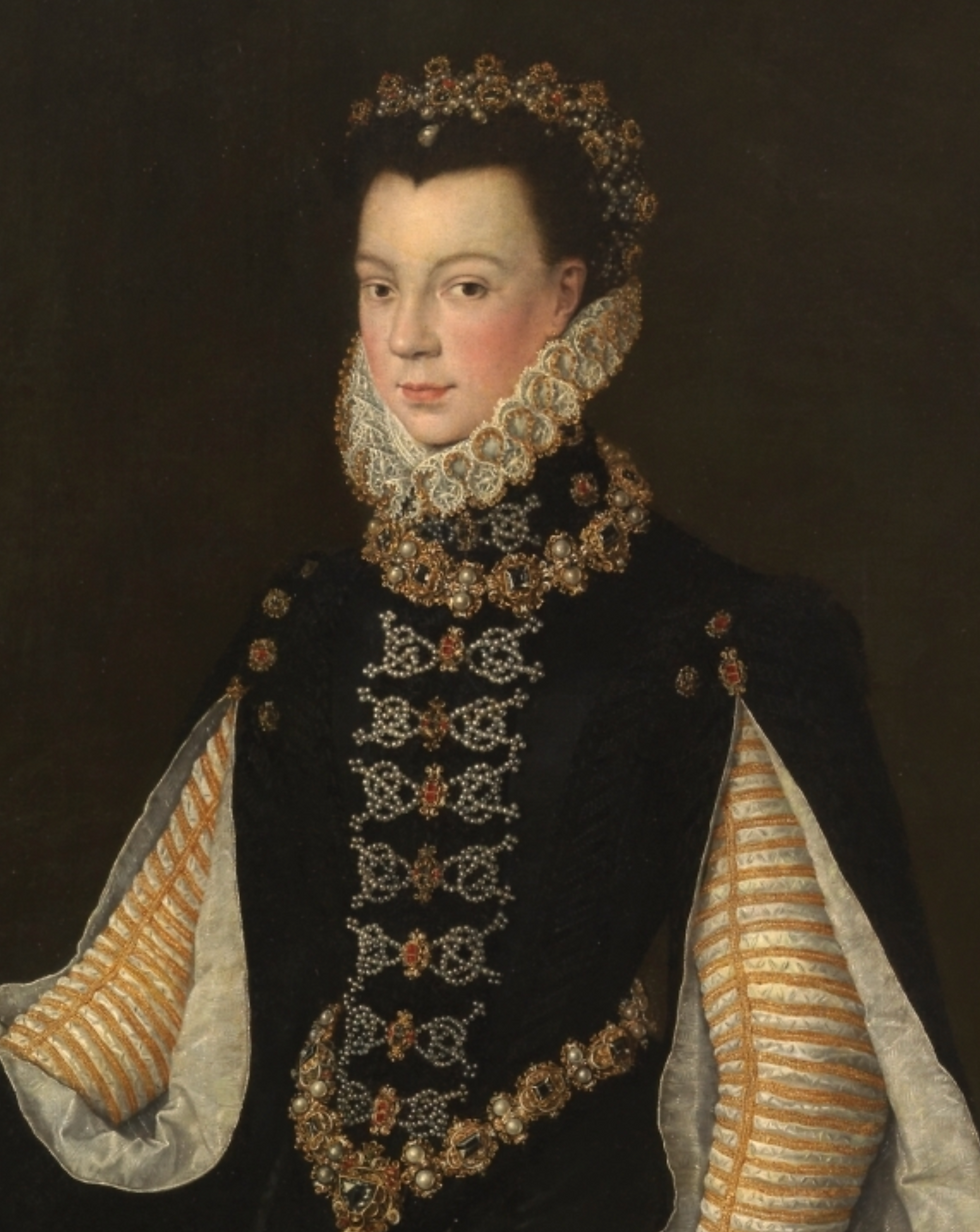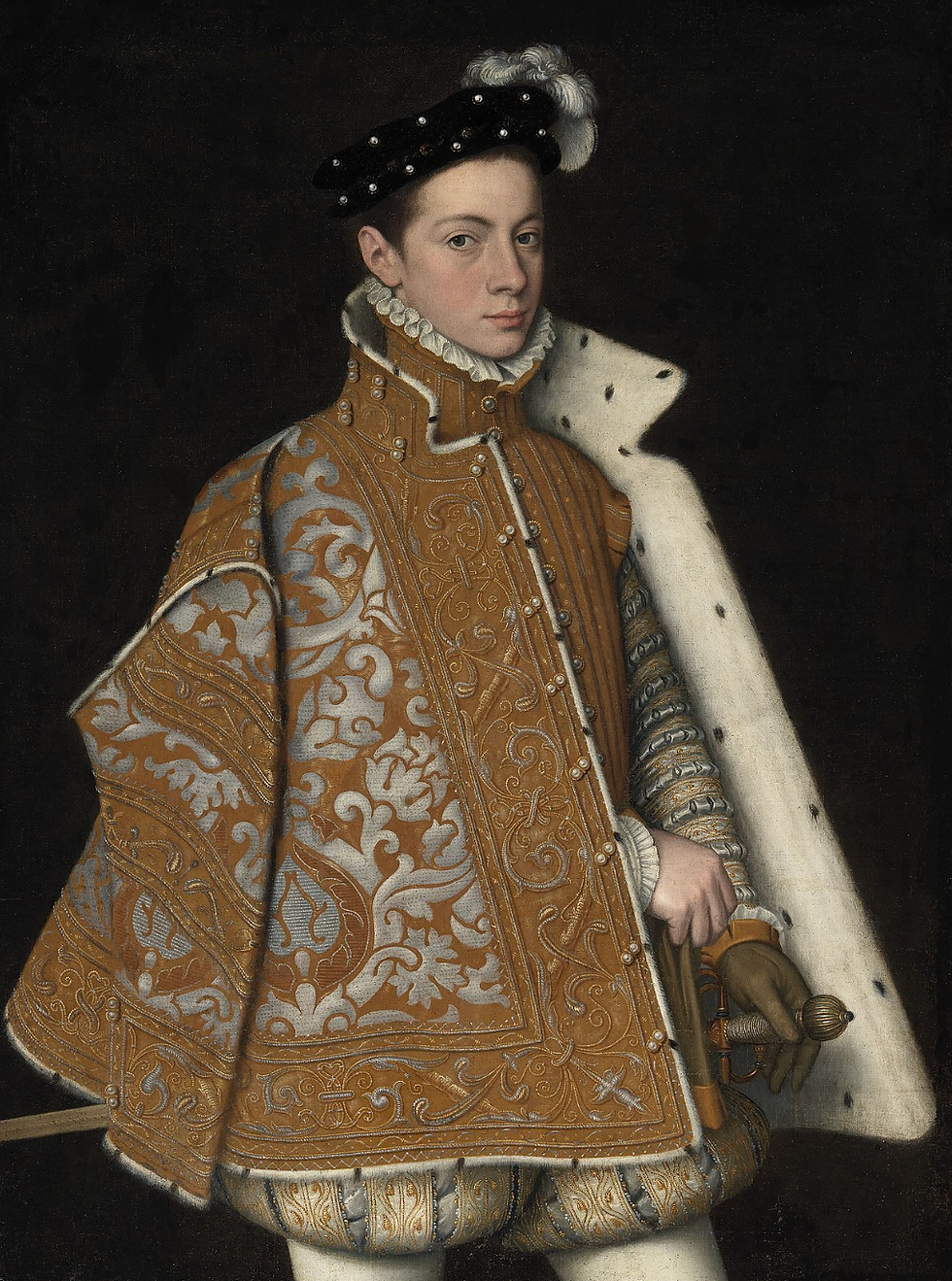Portrait of a Female Artist: Sofonisba Anguissola
- Jenny Zou
- Dec 17, 2022
- 3 min read
Predecessor of Lavinia Fontana, Sofonisba Anguissola, is another distinguished portrait painter whose artistic success correlates closely to her gender and public image. One of the first artists known for self-portraits, Anguissola executed over ten paintings of herself in her lifetime, surpassing in quantity Botticelli, Titian, and any other artist of the high Italian Renaissance. These portraits, made periodically at different junctions of Anguissola's life, effectively constructed her respectable public image and painted her both as a traditionally virtuous woman and as an able artist, which offered her golden career opportunities and a life of comfort.

Sofonisba Anguissola, Self-Portrait, 1556
In her earlier self-portraits, Anguissola often depicts herself in dark clothing with a neutral, quiet demeanour, connoting conventional female virtues such as docility and modesty. She does not draw attention to the superficialities of her beautiful appearance through ostentatious clothing or luxurious settings, but rather highlights her intelligence, good breeding, and virtue. Anguissola often appears with a book, paper, or musical instrument, attesting to her competency in literature, writing and art as a refined noblewoman.
The objects in her self-portraits also deliver explicitly stated messages. Anguissola's earliest self-portrait in 1532 features a half-bust of the artist whose hands support a large medallion. The phrase "Sophonisba Angussola ir(go) ipsius manu ex(s)peculo depictam cremonae"[i] is inscribed along the rim of the medallion, meaning "The maiden Sofonisba Anguissola, depicted by her own hand, from a mirror, at Cremona." In her self-portrait in 1554, Anguissola holds an open book that reads "Sophonisba Angussola virgo seipsam fecit 1554"[ii], which translates to "Sophonisba Anguissola, a virgin, created this herself in 1554."

Sofonisba Anguissola, Self-Portrait, 1532 (left) 1554 (right)
Both portraits, and many others, boast Anguissola's independent capabilities and impressive artistic skill. They also showcase her beauty through the delicate execution of her fair complexion and luminous eyes, in stark contrast with her plain and modest clothing. Anguissola’s self portraits display her intelligence, beauty, and modesty—virtues which were revered among upper-class nobility. The paintings are also explicit descriptors of Anguissola's chastity and adherence to traditional values through imagery and text.
Anguissola’s remarkable care in portraying these messages earned her an excellent reputation within Italy and neighbouring states. She was noted for being virtuous and beautiful, a charming conversationalist accomplished in music and dance, qualities in close accordance with Renaissance socio-cultural expectations, which endeared her to the Spanish and Italian nobility.
Anguissola's successful advertisement of feminine virtue and skill in portraiture awarded her with an invaluable opportunity: in 1559, Anguissola was recruited by the Spanish queen, Elizabeth of Valois, to go to Madrid as her art tutor with the rank of lady-in-waiting, and later even became an official court painter to the king, Philip II. Elisabeth was an amateur portrait artist, and Anguissola's artistic expertise soon gained her the young queen's admiration and confidence.

Sofonisba Anguissola, Portrait of Queen Elisabeth of Valois, c. 1561-1565
During this time, Anguissola also painted numerous official portraits for the court, including Prince Alessandro Farnese (1560) and Philip's son Carlos (1565). After the queen died of childbirth in 1568, King Philip sought a marriage for Anguissola, now 36 years old, who requested that she be married to an Italian. Philip obliged and provided Anguissola with a dowry to marry a Sicilian nobleman named Fabrizio Moncada Pignatelli. Anguissola's service in the Spanish court---especially her close relationship with the young queen---enabled her to elevate her status and secure financial stability with a respectable marriage. Furthermore, Anguissola amassed an admirable return from her craft, with gifts and a dowry of 12,000 scudi accompanied by her salary as lady-in-waiting.[iii] Anguissola continued to receive financial support from the Spanish court throughout the rest of her life, moving to Sicily and later Pisa and Genoa, where she continued to practice as a leading portrait painter.

Sofonisba Anguissola, Portrait of Prince Alessandro Farnese, 1560
Recognized today as one of the most influential women artists of the 16th century, Anguissola took advantage of her unique social environment and cultural ideologies to achieve success. Anguissola established herself as a noble, virtuous, and respectable woman before showcasing her accomplishments as an artist. Recognized for her womanly virtues, Anguissola gained the necessary socio-cultural respect that justified her distinctly masculine pursuit of developing a professional artistic career. Intriguingly, appeasing gender expectations enabled Anguissola to ultimately step out of restrictive gender norms and pursue her artistic identity. Although never formally recognized as an artist, Anguissola displayed outstanding artistic excellence to Renaissance high society, setting a precedent for evaluating women by merit instead of solely by feminine virtue. Her example sowed the seeds for a more tolerant art industry where subsequent women could attempt professional artistic careers and enjoy greater liberties.
Works Cited
[i] Sofonisba Anguissola, Self Portrait, 1532, oil on panel, 1532. [ii] Sofonisba Anguissola, Self Portrait, 1554, oil on panel, 1554. [iii] Kathleen Kuiper, “Sofonisba Anguissola | Biography, Art, & Facts,” in Encyclopædia Britannica, January 30, 2019, https://www.britannica.com/biography/Sofonisba-Anguissola.



Comments